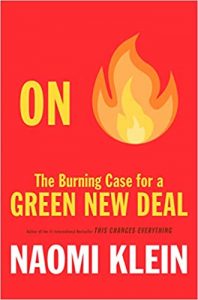The “energy crisis” of the 1970s was all about the supply (and the price) of fossil fuels. Looking back on it half a century later, it’s clear that the real crisis was (and is) the human addiction to fossil fuels, which we in the “developed” world have been unable to shake off. Now the “climate emergency” is forcing us – those of us who are not mired in denial – to see that we have become dependent not only on the use and abuse of oil, but also on the infrastructure which it made possible.
The only cure for this chronic disease is to build a new infrastructure, and adopt a new “lifestyle”, that can be powered mostly by renewable energy sources. Nothing less can mitigate the fourfold crisis (of ecology, economy and equity as well as energy) which now threatens the viability of life on earth. This has to be part of the “Green New Deal”, but we aren’t always realistic about the challenge of actually doing it at this stage of the game.
A recent article on the Uneven Earth site explains it all quite succinctly. I recommend it, especially to proponents of a Green New Deal or equivalent policy.
On the matter of “lifestyles” (as we used to call them back in the 20th century), I will close with a reflection from Bill McKibben, in his book Falter. He says that of all the lives on Earth, the most curious
are the human ones, because we can destroy, but also because we can decide not to destroy. The turtle does what she does, and magnificently. She can’t not do it, though, any more than the beaver can decide to take a break from building dams or the bee from making honey. But if the bird’s special gift is flight, ours is the possibility of restraint. We’re the only creature who can decide not to do something we’re capable of doing. That’s our superpower, even if we exercise it too rarely.
